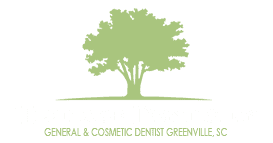138 : Scale and Root Planing Risks
Overview of Scaling and Root Planing Treatment
Although there are some risks to be aware of, scaling and root planing is known to be one of the most effective treatments for gum disease in its earlier stages. Scaling and root planing is a deep cleaning between the teeth and gums, and cleans down to the tooth roots. In some cases an ultrasonic device is used for scaling and root planing. And for some cases the more standard scraping tool will be used. In some treatments, in addition to the cleaning, an antibiotic fiber will be placed into the pockets between the gums and teeth. The antibiotic can help boost healing by lessening the time needed to heal while preventing any infection. The fiber gets removed about a week after their initial placement.
If any kind of local anesthesia has been used, the gums and lips may stay numb for a few hours following the procedure. Planing and scaling can be a sensitive treatment for some people, but generally it causes very little discomfort.
Risks of Scaling and Root Planing Treatment
One of the biggest risks involved with scaling and root planing is actually not having it done at the time the gum disease is diagnosed. Scaling and root planing can significantly improve gum and tissue health if done in the earlier stages of gum disease. In regards to risks associated with the scaling and root planing treatment itself, risks can include:
* Reaction to local anesthesia or medication
* Post-op bleeding, pain, swelling and bruising, and/or infection
* Increased sensitivity especially to temperature
* Changes in appearance of the teeth as a result of gum recession due to the decrease in inflammation
* Exposure of root surfaces as a result of gum recession due to the decrease in inflammation
* Pain in roots and teeth
* Loss of tooth mobility
Another risk for scaling and root planing can be the introduction of harmful bacteria into a person’s bloodstream. There is also some risk that gum tissue will get infected. And, antibiotics may need to be taken before and after the surgery if you have any condition that increases your risk for getting severe infection and/or if infections are generally especially dangerous for you. Conditions that might require antibiotics with scaling and root planing can include having certain heart problems, having an already impaired immune system, and/or having had a recent major surgery, and/or having any artificial body parts such as a heart valve, or an artificial hip.
Scaling and Root Planing Treatment Success
After a full scaling and root planing treatment has been completed, gum disease will essentially be stopped in its tracks. The gums will be restored and healed and will return to being firm and pink. Generally, scaling and root planing is a straight forward procedure and is often very successful in stopping gum disease. It is essential that a regular and dedicated brushing and flossing routine be established after treatment to support the healing from the treatment, and to inhibit any return of gum disease.
